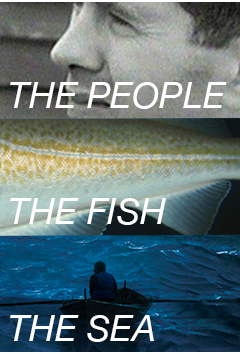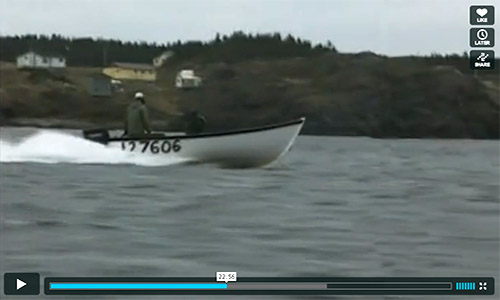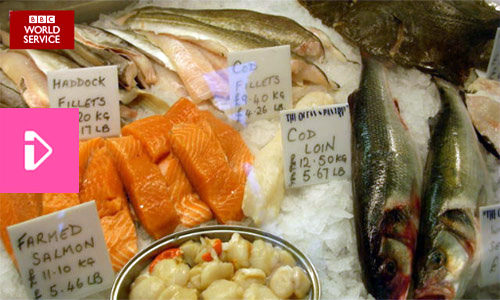The summer of 1993. Newfoundlanders have weathered the first year of the Cod Moratorium. There is hope.
More
Gallery: What Happens to the People When?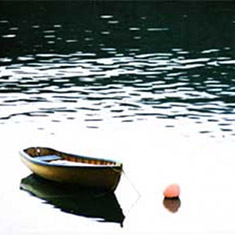
On the Package
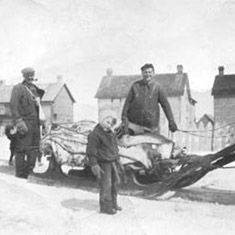
My Ancestors Were Rogues and Murderers
This personal family story examines sealing from the perspective of the harvesters themselves, in this case the filmmaker's own family. 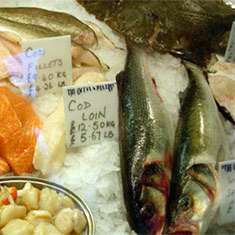
Who Says I Can't Fish?
A decade ago European fish stocks appeared to be in irretrievable decline. 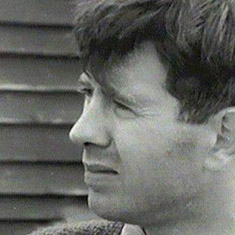
Billy Crane Moves Away
The series of films made by the National Film Board and Memorial University Extension Service under the Challenge for Change banner in the 1960's made “The Fogo Process” famous around the world. 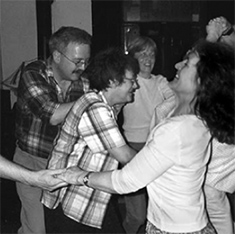
Running the Goat: A dance in 8 figures
A decade after the once-gigantic Newfoundland cod fishery was shut down, when this documentary was made, 70,000 people had left the province, and coastal communities were struggling to survive. 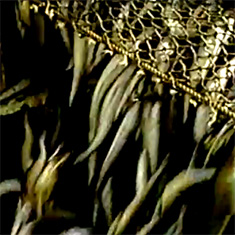
Fisheries Management Disaster
The struggle of inshore hook & line fishermen of Cape Sable Island, Nova Scotia to preserve their sustainable fishery.
Fisheries involve not only a marine environment underwater, but a human society above water.
When they collapse, they have a drastic effect upon both. With fishery workers idled, the survival of coastal communities is threatened. (In Newfoundland and Labrador, outmigration reduced the rural population by 18 percent within a decade.) But the relationship between fish and people is social and cultural as well as economic. On the one hand, fishers accumulate an intimate traditional knowledge about their marine environment which is often ignored by official fisheries science. On the other hand, societies which have evolved over centuries through fishing can experience a deep cultural shock when their resource is destroyed and their identity endangered. The film and audio I've chosen for this gallery spans the past four decades, and focuses primarily on the Newfoundland and Labrador experience of the collapse of the Northern Cod Stocks. What has been learned? What has changed? What remains? On the Package 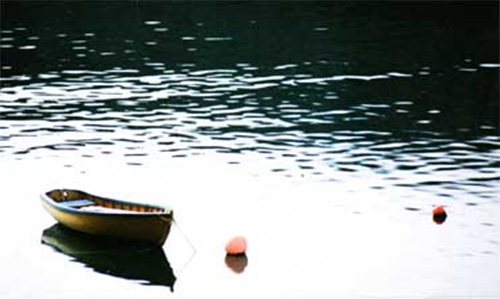
Having trouble? Listen to the MP3.
The summer of 1993. Newfoundlanders have weathered the first year of the Cod Moratorium. There is hope.
A year earlier, federal fisheries minister John Crosbie had promised the closure would last just two years. More than 30,000 workers are laid off, most surviving on the government's temporary income support program: “the package”. Like fishers all around the province, Sam Lee is spending the summer waiting, hoping that in one more year the stocks will rebound, and he can put his traps in the water again as the government promised. His community, Petty Harbour, is a community of inshore fishers who have for decades defended their bay against what they consider wasteful fishing practices such as gillnets, in favour of cod traps and handlines. Three years earlier, Newfoundland inshore fishers mounted a legal action against the federal government to force Ottawa to take stock protection measures. They lost. Should they be numbered among the villains who destroyed the cod? Outport Outlaws(1996) Kathryn Welbourn, audio, 52 minutesDescription:What brought down the gigantic North Atlantic cod stock? Before 1992, inshore fishers had pointed to offshore draggers, and technologies that hunted down dwindling fish biomass. Inshore, by comparison, featured mostly passive catch technology that required fish to swim into fixed gear cod traps, gill nets, and hand lines. Marine scientists debated possible additional culprits: changing seawater temperatures and salinity, habitat destruction. My Ancestors Were Rogues and Murderers
This personal family story examines sealing from the perspective of the harvesters themselves, in this case the filmmaker's own family.
A non-endangered, renewable resource, the Atlantic harp seal herd has more than doubled in size over the past 4 decades. It is perhaps the most carefully monitored wild harvest in the world, yet urbanites – especially Europeans – express horror that these animals are killed to provide food and fur products by subsistence fishermen for whom sealing may constitute a third of their annual income. The fact that many more baby sheep, baby cows, baby pigs and adolescent chickens are daily slaughtered to service the appetites and apparel of human beings seems acceptable to most seal hunt opponents. That other, less “cute” marine creatures (such as the North Atlantic cod and other species) are being hunted to commercial extinction receives scant notice. To their eternal shame, the organizations who created such international outrage about the Newfoundland and Inuit seal hunt did nothing to draw attention to the decimation of fish stocks in the same waters during the very same time period. Yet they paid, and continue to pay today, great attention to the healthy seal stocks. What is wrong with this picture? What draws such human compassion for the cute whiskery marine creatures, and none for the cold, finny ones? Who Says I Can't Fish?
A decade ago European fish stocks appeared to be in irretrievable decline.
The Common Fisheries Policy of the European Union brought in new quotas to protect whitefish in the hope of returning them to sustainable numbers. But the constantly shifting regulation has maddened British fishermen like Fred Normandale who end up highgrading and throwing back much of what they catch because it is over quota. To Newfoundland ears, many of Fred's words will sound like deja vu. We know the kinds of practices that wiped out the Northern Cod, amongst them: overfishing, highgrading, habitat destruction, aggressive industrial fishing technologies and failed government policies. Surely that lesson, the destruction of “the greatest fishery in the world” should have reverberated around the globe 20 years ago, and eliminated destructive harvesting policies and practices elsewhere. What did we learn? One result of the Canadian catastrophe was the establishment of relationships between fisheries scientists and fishers, involving fishers themselves as participants in scientific studies and recognising the value of traditional knowledge. Those who deal directly with marine life often recognise environmental impacts long before they're visible to distant bureaucrats in central government offices. How much credence should be given to Fred Normandale's traditional knowledge, and how much to science? Related:Sivullitinit Pisimajut Inoset
|
| Director: | Colin Low |
| Year: | 1967 |
| Format: | Video |
| Runtime: | 18 minutes |
The films were made not as entertainment per se, but as vehicles for community development. The primary audience for the films was the community residents themselves, who saw their concerns reflected back at them, and were ultimately moved to take action. The films were also shown to government officials, and the bureaucrats' responses themselves filmed and taken back to the community. On Fogo Island, residents were facing a government prognosis of inevitable resettlement, but they did not want to leave their island. The film process was effective in clarifying their resolve, and ultimately the fishermen of Fogo organised, formed a cooperative, and succeded in revitalising their communities. Although Billy Crane and some residents moved away, the “Fogo Process” went on to be used as a community development tool in countries throughout the world.
Half a century later, and two decades after the cod moratorium, other rural Newfoundlanders are forced to ponder the same questions as Billy Crane. Historic fishing centres around the province are closing, and tourism is touted as the hoped-for saviour of rural communities. What will be left for the tourists to see?
We Are Leaving Mr. Coaker
(2011 Heather Barrett, CBC 19 minutes, audio)
As the only union-built town in North America, founded in 1916 by the Fishermen's Protective Union, Port Union's lifeblood has always been its fish plant with its unionized workforce. Before the cod moratorium in 1992 the plant employed 1200 people. The plant kept going but retooled for shellfish processing, which needed a much smaller workforce. As a result, the town lost a third of its population. In 2010, Hurricane Igor damaged the plant, and it shut down. Then, in December 2011, Ocean Choice International announced it was closing its Port Union operation for good. The people of Port Union – like Billy Crane half a century earlier – must ask themselves what to do and where to go. Are their choices substantially different from his?
Click to listen.This Old Town
(2012 Heather Barrett CBC, 18 minutes, audio)
Over 60,000 people have left the province since the cod moratorium, and many small fishery-based communities in Newfoundland and Labrador find themselves in precarious condition today . The exodus of young people over the past 20 years has emptied rural schools, and community leaders are left with the extremely challenging task of keeping community services intact as their towns hollow out and their population ages. Garnish, on the Burin Peninsula, was a thriving fishing town in 1992. Today, those who haven't left find themselves living in a depopulated community of senior citizens.
Click to listen.Last Summer in Grand Bruit
(2011 Jiri Slavicinsky, 32 minutes, audio)
The last residents of Grand Bruit, on the island's south coast, resettled to larger communities in 2010. This documentary captures the wrenching emotions of resettlement through Grand Bruit natives Sheila and Jerry, who tell a personal story about the meaning of home in an increasingly urbanized world.
Click to listen.Running the Goat: A dance in 8 figures
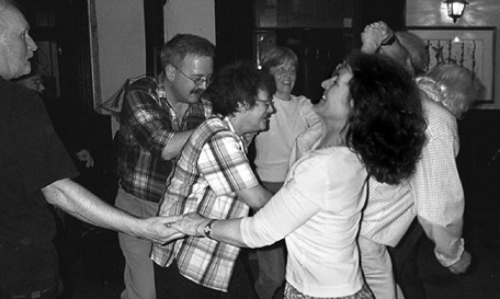
| Creator: | Chris Brookes |
| Year: | 2004 |
| Origin: | NL |
| Agency: | Battery Radio |
| Format: | Audio |
| Runtime: | 25 minutes |
Having trouble? Listen to the MP3.
After the first decade, the effect on the culture was dramatic too, but how do you measure cultural change? This documentary uses the yardstick of a centuries-old Newfoundland “set dance”. The dance, Running the Goat, was unique to the isolated community of Harbour Deep on Newfoundland's Northern. Peninsula. A decade after the Cod Moratorium, deprived of their traditional fishing livelihood, residents made the painful choice to resettle. The community has vanished; the dance survives. Is this a metaphor for the once-great Newfoundland cod fishery? In cultural terms, is the fishery still central to the way Newfoundlanders think of themselves? Or have fish been replaced now by offshore oil and tourism?
A Rock, Turning
(2009 Angela Antle, CBC Radio, 19 minutes, audio)
Cod was the reason Newfoundland's coastal communities were settled in the first place. With the fish gone, tourism is hailed as the industry that can help save rural areas. Four decades after Billy Crane moved away, entrepreneur Zita Cobb moved back to Fogo Island to invest millions into rejuvenating her home town via high-end tourism: stressing local arts and crafts, imported foreign artists, 5-star accomodations and international promotion. What tourists to the province are buying - what many communities are selling - is a window into a unique culture, but it is a culture that was shaped over half a millennium by the cod fishery. At its best, provincial tourism builds on the authenticity of the place; at its worst it peddles a rubber-booted Disneyland. Two decades after the moratorium, with the fish gone, has Newfoundland culture become a commodity to be sold in the marketplace, a quaint picture of the past, as lifeless as the cod fishery that gave it birth? What would Billy Crane make of it all?
Click to listen.Iceberg Wrangler
(2008 Janna Graham, Homelands Productions, 7 minutes, audio)
Whyman Richards, a fisherman in northern Newfoundland has struggled to make ends meet since the cod fishery collapsed in the early 1990s. Sixteen years later in 2008, he's harvesting icebergs for a bottled water company, which markets the product to thirsty Texans.
Click to listen.Fisheries Management Disaster
| Creator: | Chuck Lapp |
| Year: | 2002 |
| Agency: | Envision Productions |
| Format: | Video |
| Runtime: | 64 minutes |
Faced with changed federal government fishery regulations and corporate domination of their fishing grounds by habitat-destructive bottom dragging, communities fight for survival. The bureaucrats and politicians suggest that the issues are too complex, but on the ground communities are threatened and inshore fishermen are literally committing suicide. The contrast is stark, and begs comparison to the plight of inshore fishermen elsewhere who watch their common-property rights on fishing grounds devolve to corporate ownership, and see their sustainable handline fishing methods supplanted by destructive industrial methods. What incentive is there for big business fishers to be stewards of stocks, stewards of communities, stewards of cultures?
Maine Fishermen for Fleet Diversity
(2012 Maine Fisherman, video)
Maine fishers outline their fears about increasing concentration of fishing rights in the hands of the few, privatisation of “The Commons”, marginalisation of inshore fishers, and how all this decimates fish stocks. Where have we heard this before?
Click to watch.Additional Links:
Links
Lost at Sea(Sandy Tolan, Homelands Productions, 1998, audio, 18 minutes.)
Inshore Fishing
(Producer: Nick Butcher, Radio New Zealand, 2010, Audio, 28 minutes.) Lobster Diver
(Claudine LoMonaco, Homelands Productions, 2007, Audio, 7 minutes.) Survival of an Island
(Producer: Helen Gallagher, RTE Ireland, Audio, 42 minutes.) The Penny Fish and the Multinational
(Sandy Tolan, Homelands Productions, 1997, Audio, 16 minutes.)
